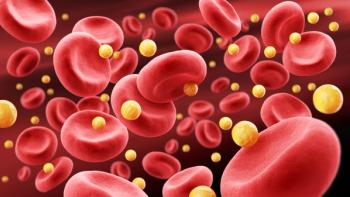
New Treatment Guidelines Proposed for HIV
Treatment with antiretrovirals is now recommended for all adults with HIV infection, regardless of their CD4 count.
Treatment with antiretrovirals is now recommended for all adults with HIV infection, regardless of their CD4 count.
According to the International Antiviral Society-USA (IAS-USA), new data and drug regimens that have become available over the past 2 years
These guidelines were released in the July 25, 2012, issue of the Journal of the American Medical Association and presented in a media conference before the opening of the International AIDS Conference.
Previous recommendations relied on the plasma CD4 count of a patient with HIV to determine when an individual should initiate treatment. In 2008, it was suggested that patients with a CD4 count of fewer than 350 cells/mcL should be offered combination ART therapy, and in 2010 that value was increased to 500 cells/mcL.
Now, the IAS-USA is recommending that all HIV patients be offered ART regardless of their CD4 cell counts, based on
Barring specific situations, IAS-USA recommends that initial therapy continue to include a “combination of 2 nucleos(t)ide reverse transcriptase inhibitors (NRTIs) and a potent third agent, generally a nonnucleoside reverse transcriptase inhibitor (NNRTI), a ritnovir-boosted protease inhibitor (PI/r), an integrase strand transfer inhibitor (InSTI), or, rarely, an agent that blocks the CC chemokine receptor 5 (CCR5).”
The 2 NTRIs noted as the preferred combination are tenofovir disoproxil fumarate and emtiricitabine, which together are sold as Truvada. The fixed-dose combination of abacavir and lamovudine is also recommended; together these drugs are known as Epzicom.
The “potent third agents” recommended by the panel are efavirenz (Sustiva), ritnovair-boosted atazanavir (Reyataz), ritonavir-boosted darunavir (Prezista), and raltegravir (Isentress). There were also additional alternatives for these therapies listed in the
The “quad” pill—a combination of tenofovir, emtricitabine, elvitegravir, and cobicistat—was suggested as an alternative treatment to raltegravir, even though the quad is still pending approval by the FDA in the United States. A decision is expected on this drug in August of this year.
Further recommendations to monitor drug treatment were included in the proposed guidelines, including, but not limited to: when to test HIV-1 RNA levels after initiation of treatment, levels at which switching of ART should be considered, when genotypic testing for resistance should occur, and which patients would be good candidates to undergo therapeutic drug monitoring.
“When HIV is allowed to replicate uninhibited by ART, resultant immune activation and inflammation are associated not only with immune destruction and opportunistic infections but also increased rates of cardiovascular, renal, hepatic, and neurologic diseases; malignancies; and other serious non-AIDS diseases,” the authors of the proposed guidelines concluded. “Evidence from clinical trials, observational cohorts, and pathogenesis studies all point to the health benefits of earlier ART.”
Newsletter
Stay informed on drug updates, treatment guidelines, and pharmacy practice trends—subscribe to Pharmacy Times for weekly clinical insights.


















































































































































































































